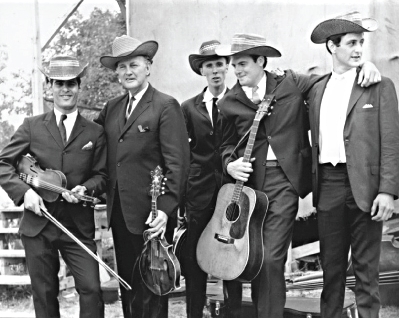Exploring the History and Influence of Bluegrass Music Link to heading
Bluegrass music, a genre deeply rooted in the Americana tradition, has a rich history that reflects the cultural melting pot of the United States. This post will take you on a journey through the origins, evolution, and cultural significance of bluegrass music.
The Origins of Bluegrass Music Link to heading
Bluegrass music originated in the Appalachian region of the United States during the 1940s. It is a subgenre of country music that draws heavily on the musical traditions of the British Isles, particularly Scotland and Ireland. The genre is characterized by its use of acoustic string instruments and its unique blend of folk, blues, and jazz elements.

The “Father of Bluegrass,” Bill Monroe, played a pivotal role in defining the genre. Monroe’s band, the Blue Grass Boys, formed in the 1930s, was instrumental in shaping the sound that would come to be known as bluegrass. Monroe’s high-pitched tenor voice, along with his mandolin playing, set the standard for the genre.
Key Characteristics of Bluegrass Music Link to heading
Instrumentation Link to heading
The traditional bluegrass ensemble typically includes the following instruments:
- Banjo: Often played in a three-finger picking style.
- Fiddle: Adds a melodic and often improvisational element.
- Guitar: Provides rhythm and occasionally solos.
- Mandolin: Played in a “chop” style to provide a percussive rhythm.
- Double Bass: Adds the low-end foundation for the ensemble.
Vocal Harmony Link to heading
One of the defining features of bluegrass is its vocal harmony. The most common harmony structure is the three-part harmony, consisting of the lead, tenor, and baritone voices. This style of harmony is deeply rooted in the gospel music tradition.
Tempo and Rhythm Link to heading
Bluegrass music is known for its fast tempo and driving rhythm. The music often features complex, syncopated rhythms and rapid-fire instrumental solos, known as “breaks.”
The Evolution of Bluegrass Music Link to heading
The 1950s and 1960s: The Golden Age Link to heading
The 1950s and 1960s are often considered the golden age of bluegrass music. During this period, the genre gained widespread popularity, thanks in part to the rise of radio and television. Bands like Flatt and Scruggs and The Stanley Brothers helped to popularize bluegrass music across the United States.
The 1970s and 1980s: A Time of Experimentation Link to heading
The 1970s and 1980s saw a period of experimentation and fusion in bluegrass music. Artists began to incorporate elements from other genres, such as rock and jazz, into their music. This period saw the rise of “newgrass,” a subgenre that pushed the boundaries of traditional bluegrass music.
The 1990s to Present: A Resurgence Link to heading
In the 1990s, bluegrass music experienced a resurgence in popularity. This was partly due to the success of the soundtrack for the film “O Brother, Where Art Thou?” which introduced a new generation to the genre. Today, bluegrass music continues to thrive, with festivals, radio shows, and online communities dedicated to the genre.
Cultural Impact of Bluegrass Music Link to heading
Influence on Other Genres Link to heading
Bluegrass music has had a significant influence on other genres, including country, folk, and even rock music. Many contemporary artists cite bluegrass as an inspiration, and the genre’s emphasis on instrumental virtuosity and vocal harmony has left a lasting legacy on American music.
Bluegrass Festivals Link to heading
Bluegrass festivals play a crucial role in preserving and promoting the genre. Events like the MerleFest in North Carolina and the Telluride Bluegrass Festival in Colorado attract thousands of fans and feature performances by some of the biggest names in bluegrass music.

Educational Programs Link to heading
Numerous educational programs and workshops are dedicated to teaching the skills and traditions of bluegrass music. These programs help to ensure that the genre continues to thrive and evolve for future generations.
Conclusion Link to heading
Bluegrass music is a vibrant and dynamic genre that continues to captivate audiences with its rich history and cultural significance. By exploring its origins, key characteristics, and evolution, we gain a deeper appreciation for the genre and its enduring impact on American music.
For those interested in learning more about bluegrass music, there are numerous resources available, including online archives, documentaries, and instructional materials. Whether you are a seasoned musician or a casual listener, bluegrass music offers a unique and enriching experience that is well worth exploring.